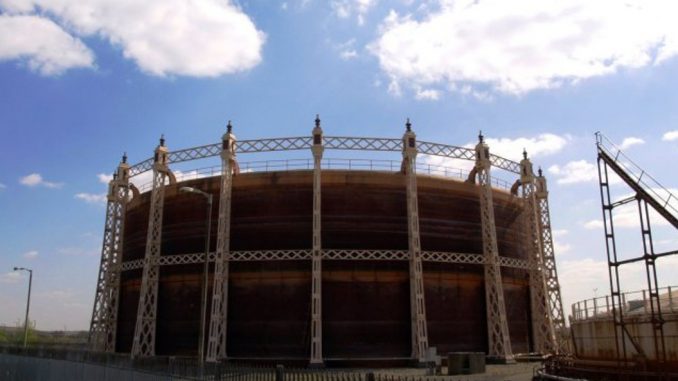
Britain’s gas network could see its carbon footprint cut by two-thirds by 2032 thanks to the replacement of aging iron pipes with the world’s first zero-carbon gas grid.
The Iron Mains Risk Replacement Programme is a £28 billion scheme to replace the United Kingdom’s old iron gas network with plastic piping capable of carrying hydrogen and biomethane.
As part of the replacement scheme, the Energy Networks Association’s Gas Goes Green programme has brought together the nation’s gas companies together with the aim of creating an emissions-free network.
Currently, the existing iron pipes transport methane-based natural gas. A quarter of global warming caused by humans is attributed to methane emissions with the gas being 21 times more harmful than carbon dioxide.
Leaking gas pipes which allow methane to escape into the atmosphere are therefore a huge contributor to climate change – even when an emergency pipe repair can be carried out to fix them relatively quickly.
The new pipes will move Britain’s network from delivering methane-based natural gas to zero-carbon hydrogen and biomethane. The cut to emissions will be the equivalent of taking over 500,000 cars off the road according to the Energy Networks Association.
Prior to the launch of the Iron Mains Risk Replacement Programme in 2014, iron pipes supplied methane-based gas to 85 percent of the network in Britain.
284,000km of pipelines existed in the UK and 23 million properties were served by this most harmful of climate change contributors.
In the past six years, figures from the Energy Networks Association show that replacing iron pipes has already reduced the gas network’s carbon footprint by a fifth – the equivalent of taking 179,123 cars off the road.
Should the plans to roll out the project across the entire network by 2032 be approved by the regulator Ofgem, then emissions will drop again by more than half for a 66% total reduction, taking another 347,310 cars off the road.
There is still plenty more work to do. The UK government has set a legally binding target of reaching net zero emissions by 2050.
Energy companies have responded by increasing the amount of power generated by renewables to a record-high of 33% in 2018. In terms of decarbonising gas, over 100 green gas sites are now connected to the network.
David Smith, Chief Executive of Energy Networks Association, said, “We need to decarbonise the gas that we use.”
“This investment programme that was first introduced in 2002 to improve safety is now playing a vital role in reducing emissions and laying the foundations for a world-leading zero carbon gas grid, coming in on-time and under budget.”
“The figures we’re publishing come with one caveat. The emissions reductions we can deliver going forward are dependent on the decisions due to be made by Ofgem, and it is important that the regulator recognises the wider impact of its decisions in this area.”
“If it fails to back that investment, then not only do we risk missing out on those reductions; we risk missing out in having the infrastructure we need to put Britain at the front of the pack of the international race for hydrogen.”

Leave a Reply